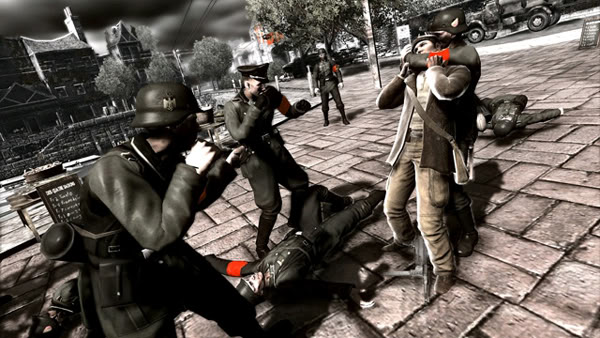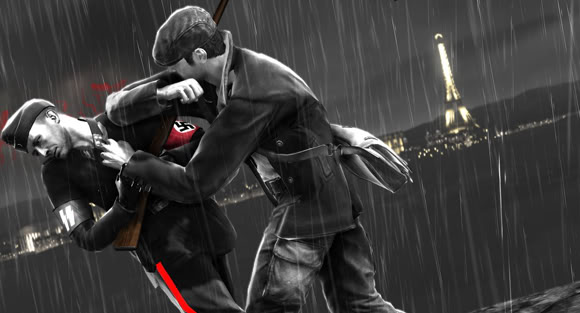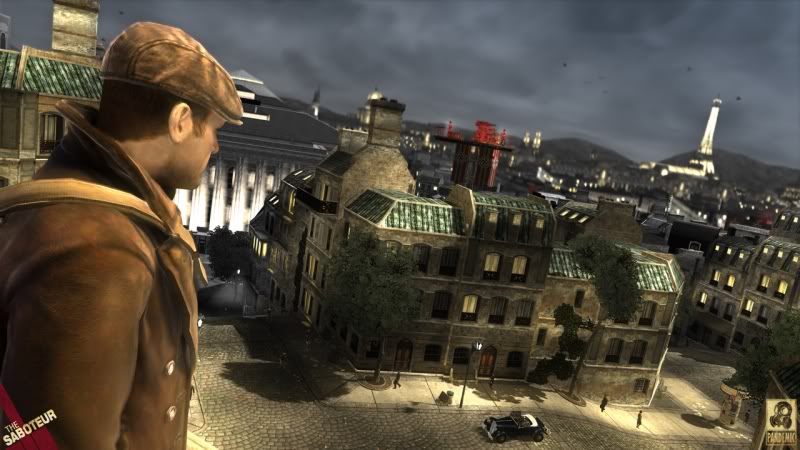This post has not been edited by the GamesBeat staff. Opinions by GamesBeat community writers do not necessarily reflect those of the staff.

I'm not crazy about open-world games. I stop playing most of them well before I ever finish. The one game I got much further in was Grand Theft Auto: San Andreas, but even then I gave up halfway through it. There are just too many things to do, and too many ways for me to get distracted from the main story. I always end up playing too many side-missions and getting bored with the mission structure before I ever get a chance to see the end of the storyline.
Sure, Saboteur is the first open-world game I've played from this generation, but I think it really excels where the others I've played failed. I wasn't overwhelmed with police or firefighter missions, or poorly controlled and frustrating races that were moderately fun but eventually wore me out on the overall game. Surprisingly, despite the fact that the main character in the game is a former professional racer, there are only two races throughout the entire story, and three optional ones to unlock new cars and perks.

And really, most of the missions in Saboteur are pretty diverse, keeping you interested. The game's developer, Pandemic, didn't flood the world with filler missions. While this could have been a result of their short deadline (EA closed down the studio almost immediately after the game released), I think it greatly benefited. Sure, the story isn't amazing, but it is solid enough to pull you through and keep you engaged, especially when there aren't a bunch of pointless distractions.
Aside from the mechanics of the game, it really is the splashes of a unique art style that sold me on Saboteur, though. Throughout your character's adventure, areas where the Nazis have a strong presence, and the masses live in fear, are represented in black and white. It's only upon completing specific missions of notable destruction, something that would cause the public to take notice of the fact that the revolution is fighting back, that color in the area is restored.
I absolutely loved this design choice, not only for it's ability to help in the main gameplay (revolutionaries all have something blue on them, and hideouts are marked with blue, while Nazi soldiers and guard towers either glow or have marks of red, making distinguishing between the two easy when everything else is in black and white), but just in the aesthetic it helps paint the game with. It counteracts any amount of "Hell yes, let's kill some Nazis, KICK ASS!" there might be in the story, and makes the game feel deeper and more meaningful.

The one mission that hit it completely out of the park for me, was the final one. I won't spoil it, but it is the complete opposite of what you expect when going into the final mission of a video game. In my mind, it turned what would have been a shallow feeling of completion into something a little more. After beating the game, I just sort of watched the credits in silence. I felt satisfied and happy, but took some time to reflect on the story like I might not have if I'd just faced down some giant, mutant, final boss.
Maybe reviewers who have played countless open-world games and don't despise the formula as much as I do have some gripes with some of the mechanics of the game, but from my experience I have to recommend you give the game a shot. It might have gotten middling reviews, but I think it is certainly worth a rental or bargain bin purchase even if you're wary. I was expecting to give it a 4 out of 5 when I sat down to write this review, but I can't think of any reason to justify that score now, after what came out from my writing.
Score: 5 out of 5
Confused about my scoring system? Read this explanation.
Thanks a ton to Bitmob's own, Juan Letona, for sending me this game when I got my Playstation 3. I might not have ever played it otherwise, and this isn't the only article I have in mind as a result of having played it.
